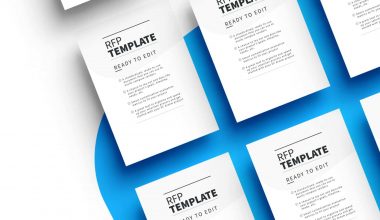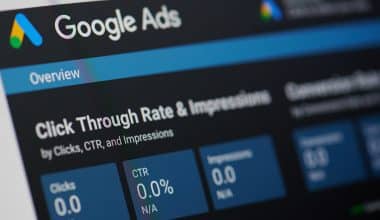If your digital marketing campaign isn’t having the desired effect, it is not as productive, or your sales and lead counts are far lower than you had planned. How can you enhance your performance? Click Funnels is the best solution for you.
In this article, I will explain what a click funnel is, how to make one, and how to optimize it for small and large enterprises to best serve you and your clients.
Key Points
- A click funnel is for individuals or businesses that do not have clients at this time but could in the future.
- It offers information that designates someone as a possible customer of a service or commodity.
- The quality of the Click Funnels is determined by several criteria, including the contact information’s accuracy, and the incentive that was used to entice the prospect.
- Businesses employ a range of marketing strategies, including social media, email marketing, sales calls, direct response marketing, and advertising, to create Click Funnels.
- Short-click funnels and long-click funnels are the two major examples of click funnels.
What is a click funnel?
A click funnel is a sequence of experiences or marketing materials (usually landing pages) that leads to a conversion event. Simply put, I refer to it as a sequence of landing pages that results in a conversion event.
Additionally, it is a key component of every digital marketing plan, including lead creation. Through a link in an email sent by marketing automation, a sponsored search ad, or a social media post, prospects can join a click funnel. Afterward, the prospect is sent a link that leads them to a landing page that has products or services that your business offers.
How does a click funnel work?
When using click funnel marketing, you can generate leads from the landing page and may proceed to click through multiple pages featuring upsells and add-ons before completing the conversion process.
Note that a conversion does not always equate to a sale at the bottom of a click-through funnel. Other forms of conversion in a click funnel include signing up for a webinar or downloading a whitepaper.
What is an example of a click funnel?
Click funnels come in short or long forms.
#1. Short-click funnels:
These are the most popular and, as a result of the prospect’s ability to get right to the point, typically have greater conversion rates.
#2. Longer click funnels:
This form of click funnel will help you gather more information about your prospects, but if they’re too long, they may turn them off.
Examples of click funnel examples are:
- Email newsletter sign-up
- Whitepaper download
- Blog post notification email sign-up
- Infographic download
- eBook guide about your industry, product, or service
- Webinar sign-up.
Note that you can upsell prospects from free content to a paid purchase if they subscribe to your email list or seek more information. Additionally, click funnels are very useful for companies that sell tier-based or add-on products. Therefore, I recommend that you incorporate click funnels into your digital marketing strategy to boost your business’s conversion rate.
How to create a click funnel
Whether your company is small or large, creating a click funnel is an excellent way to learn more about sales funnels and the sales process in general. Here, I will take you through how to create an effective click funnel:

#1. Start with your landing page.
The landing page is a straightforward webpage with a clear statement, some elegant yet basic visuals, and a high-quality photograph. Landing pages inform potential clients that they have found the page they were looking for.
This is significant because there are numerous ways to drive traffic to your website, including email campaigns, network marketing campaigns, and other creative products and advertising initiatives. However, once visitors land on your landing pages, they require thorough information and excellent support to be guided in the right direction and increase your conversion rates.
Furthermore, you must structure your website to follow the ideal click funnel after creating a landing page. Therefore, a landing page serves as the final stage before a customer enters the wide aperture of the click funnel when building sales funnels for an online firm.
Read More: Building Irresistible Landing Pages That Drive Results: From Click to Conversion
#2. Generate leads
Leads are a salesperson’s gold mine. Leads are persons who have shown an interest in our goods or services through actions they have performed, are comparable to our target demographic, or are possible clients.
I recommend platforms like Mailchimp to generate leads for your business, which helps your clients receive insightful recommendations more easily. I prefer them because once your leads are generated, they simply send them to your landing pages and allow the click funnel to handle the rest.
#3. Lead nurturing
Lead nurturing is about reaching out to quality leads for your business. Here, you are sure that the client possesses a potential or actual interest in your products or services, and you use this connection to advance the sale.
I call this target marketing because the goal is to direct the potential customer to a landing page and then deeper into your website.
Read More: LEAD MANAGEMENT SYSTEM: Definition and How It Works
#4. Upsell
Here, the visitor has now made it clear that they are interested in a certain good or service. They are examining the product or primary service, reading up on it, examining their options, and so on.
Here’s where your business can offer them more of what they’ve already shown interest in: subscription plans, add-ons, or even potential upgrades to the base plan.
Additionally, you can follow up with the pricier side of whatever product or service initially drew customers’ attention: the more costly plan, the premium package, the executive trim level, the first-class suite, and the subscription services that will make their lives better.
Put simply, this is where companies offer their clients an upgraded, more costly version of the product or service they have previously expressed interest in. Therefore, to facilitate this process, you must first create an online store.
Read More: Upselling: Meaning, Differences with Cross-Selling, Examples & All You Need
#5. Analyze feedback and keep it going.
To guide the customer toward the checkout page, you will compile all of the information they have provided. Additionally, you must make an effort to fulfill their requests in light of their input.
Read More: 11 Best Customer Feedback Tools In 2024
Checklist for creating a Click Funnel
Click funnel templates.
Click the image below to get free click funnel templates:

What is a sales funnel?
Now that you know about click funnels, let’s look at what a sales funnel is.
A sales funnel is a marketing term that illustrates the path a consumer takes from being a cold prospect to being a paying customer. For you to complete the sales cycle, you must map out the steps of your sales funnel.
Additionally, a well-designed sales funnel can assist your company in determining when potential consumers are most interested in speaking with your sales staff or making a purchase of your goods or services.
For instance, companies providing professional services ought to invest some time and effort into developing a strong sales funnel using strategies for marketing professional services.
Click here to read more about What Is A Sales Funnel?: How to create a sales funnel(Stages, Examples, And Strategies
What is the difference between a sales funnel and a click funnel?
Here is where we finally compare and contrast sales funnels and click funnels, highlighting how these two approaches are both very similar and quite different:
#1. The starting point
In each of these approaches, where does the process start? In a sales funnel, however, the customer journey starts the moment they land on and engage with your website. But in the click funnel, it all begins with a social network post or another method, such as an email or sponsored advertisement. By doing this, the process’s funnel will start at the top.
#2. Keeping in contact with customers:
You need to have some upsell or add-on pages if you want to stay in touch with your clients in the click funnel. However, you have to apply sales strategies in the sales funnel, including making calls or sending out informative emails and newspapers.
#3. Conversion Point
The primary distinction between both approaches is how they view conversion. Customer conversion in the click funnel refers to when they download free content, click on particular links, or purchase goods or services. However, a customer’s conversion in the sales funnel only happens after they finish their transaction.
Now that you are aware of the distinctions between click funnels and sales funnels, you can more effectively use both in your digital marketing plan. Additionally, remember that you can utilize these techniques independently or concurrently.
How do you bring out the best in your Click Funnel?
Using Brunson’s method, you can bring out the best in your click funnel by taking the following steps:
#1. Make effective plans:
Make a detailed plan outlining the steps you plan to take customers through in the funnel. Additionally, make sure the offer and call to action are clear and provide plenty of opportunities for conversion.
#2. Be direct in your approach:
Identify and generate a sense of urgency in your communications by addressing the most important pain issues of your prospects (a tactic known as a “hook” by marketers). Keep your attention entirely on this message to avoid diverting your viewers.
#3. Offer quality products and services:
To draw leads into your funnel and nurture them until they are prepared to purchase more expensive goods or services, think about providing an alluring, entry-level product that you can give with little difficulty.
#4. Upsell:
When it’s possible, don’t pass up the chance to upsell. It’s simpler to persuade someone to buy more products once you’ve primed them to do so. This idea is frequently seen on e-commerce websites; for example, it is nearly impossible to purchase an iPhone without an online retailer recommending that you also buy a few AirPods to match.
Is the sales funnel outdated?
The short answer to that is no; however, there have been changes to the conventional sales funnel. The sales funnel of today is no longer a linear procedure where a prospective client must adhere to a series of steps.
SALES FUNNEL STAGES: What Is It, Salesforce, B2B & Template.
SOFTWARE SALES: Meaning, Complete Guide, SalesForce, Funnel & Salary
Thomas Peter Maletta Explores How To Optimize Every Stage of the Sales Funnel






